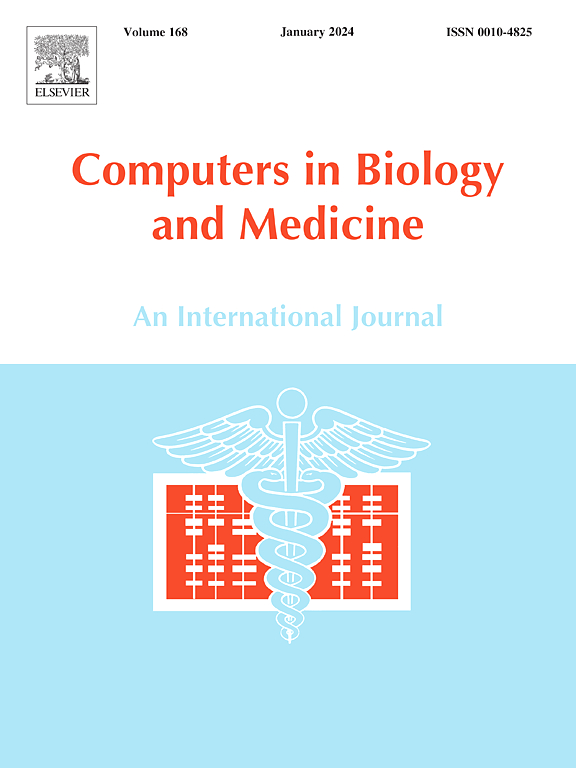EB-YOLO:基于YOLO算法的高效轻量级血细胞检测仪
IF 6.3
2区 医学
Q1 BIOLOGY
引用次数: 0
摘要
血细胞检测是医学诊断的重要组成部分。目标检测是血细胞分析的趋势,研究重点是高精度神经网络模型。然而,这些模型具有复杂的体系结构和较高的计算成本。它们无法在低端设备上实现快速检测。虽然轻量化模型可以大大提高检测速度,在低端设备上实现实时检测,但在复杂任务中精度较差。在计算资源有限的环境下,开发高效、高精度的血细胞检测器具有重要的实用价值。本研究提出一种基于YOLO的高效血细胞检测器(EB-YOLO)用于血细胞检测。该模型采用ShuffleNet作为主干网络进行特征提取,减少了参数个数和计算量。它结合了卷积块注意模块(CBAM)来增强特征表示。颈部网络采用自适应空间特征融合(Adaptive Spatial Feature Fusion, ASFF)进行特征融合,提高了多尺度目标的特征提取。深度可分离卷积取代标准卷积,在保持性能的同时减少参数。在BCCD数据集上的实验结果表明,该模型的准确率为92.1% mAP@50 %,计算复杂度仅为0.9 GFLOPs,参数个数为0.289M。在Raspberry PI 5上的推理速度对比结果表明,该模型的检测速度优于经典的YOLO算法模型。该方法成功地平衡了轻量化设计和高精度,有望在低端嵌入式系统上部署。本文章由计算机程序翻译,如有差异,请以英文原文为准。
EB-YOLO:An efficient and lightweight blood cell detector based on the YOLO algorithm
Blood cell detection is an important part of medical diagnosis. Object detection is trending for blood cell analysis, with research focusing on high-precision neural network models. However, these models have complex architectures and high computational costs. They cannot achieve rapid detection on low-end devices. Although lightweight models can greatly enhance the detection speed and achieve the real-time detection on low-end devices, their accuracy is poor in complex tasks. The development of efficient and highly accurate blood cell detectors for environments with limited computational resources is of great practical value. This study proposes an Efficient Blood Cell Detector based on YOLO (EB-YOLO) for blood cell detection. The model uses ShuffleNet as the backbone network for feature extraction to reduce the number of parameters and computational load. It incorporates the Convolutional Block Attention Module (CBAM) to enhance feature representation. In the neck network, Adaptive Spatial Feature Fusion (ASFF) is used for feature integration to improve multi-scale target feature extraction. Depth-wise separable convolution replaces standard convolution to reduce parameters while maintaining performance. Experimental results on the BCCD dataset show that the proposed model achieves 92.1 % mAP@50 %, the computational complexity is only 0.9 GFLOPs, and the number of parameters is 0.289M. The comparison results of the inference speed on Raspberry PI 5 show that the detection speed of the model is better than the classic YOLO algorithm model. The proposed method successfully balances lightweight design and high accuracy, which shows promise for deployment on low-end embedded systems.
求助全文
通过发布文献求助,成功后即可免费获取论文全文。
去求助
来源期刊

Computers in biology and medicine
工程技术-工程:生物医学
CiteScore
11.70
自引率
10.40%
发文量
1086
审稿时长
74 days
期刊介绍:
Computers in Biology and Medicine is an international forum for sharing groundbreaking advancements in the use of computers in bioscience and medicine. This journal serves as a medium for communicating essential research, instruction, ideas, and information regarding the rapidly evolving field of computer applications in these domains. By encouraging the exchange of knowledge, we aim to facilitate progress and innovation in the utilization of computers in biology and medicine.
 求助内容:
求助内容: 应助结果提醒方式:
应助结果提醒方式:


